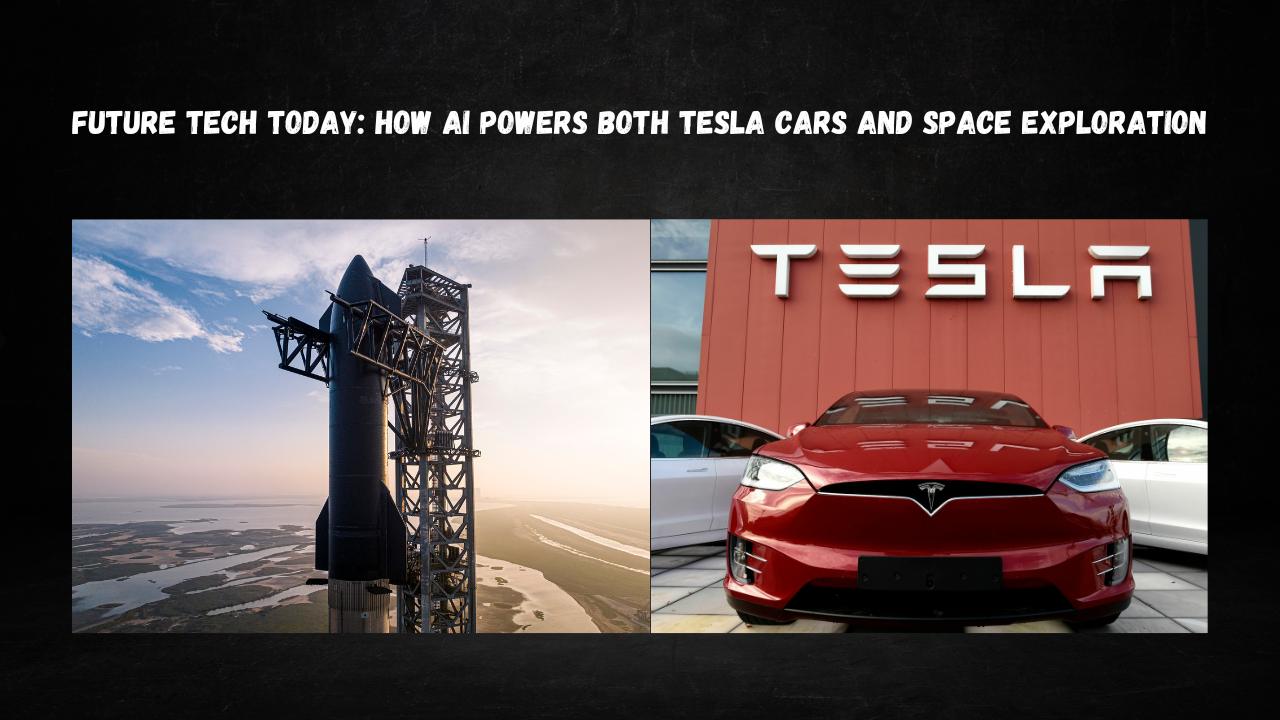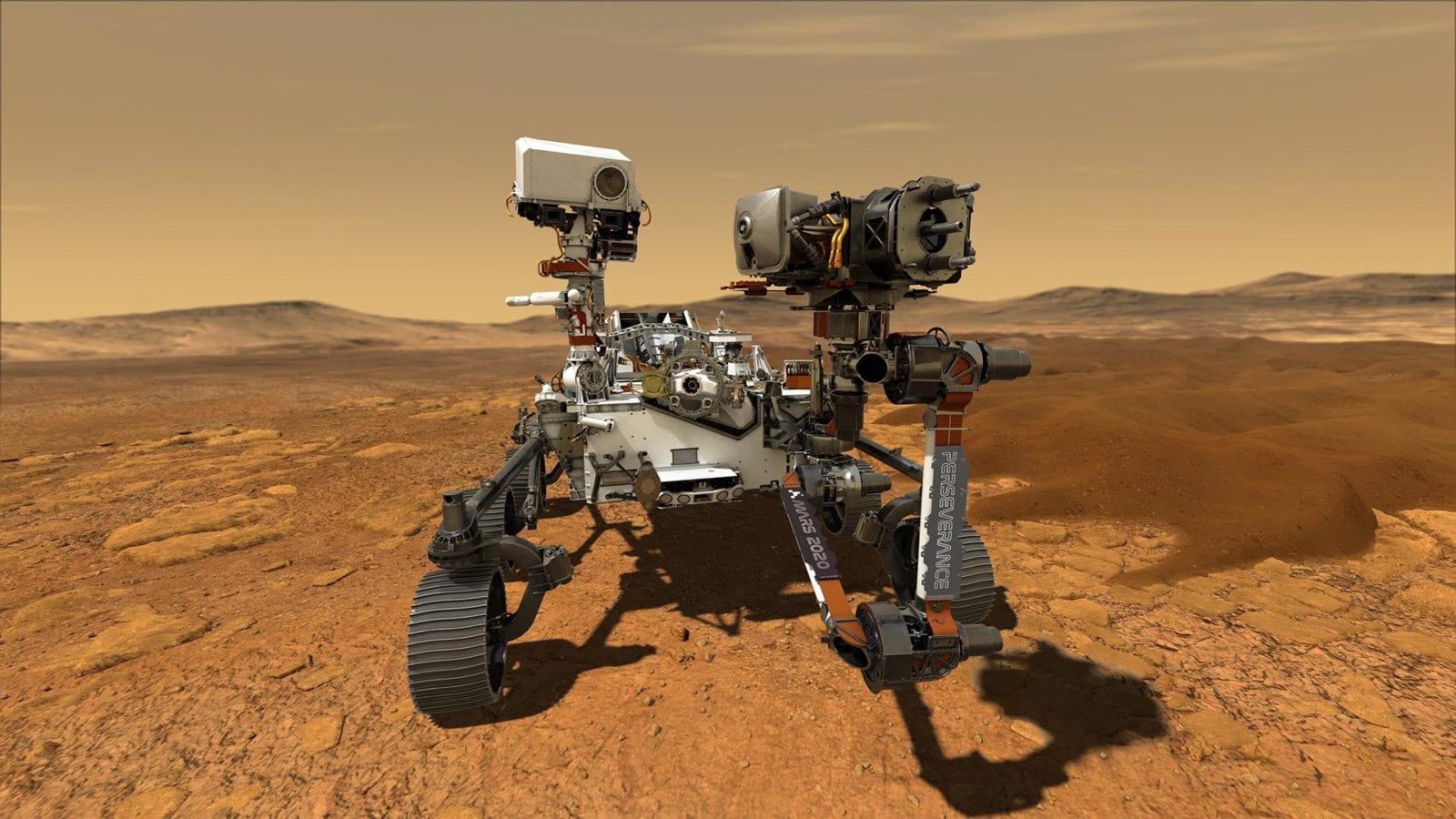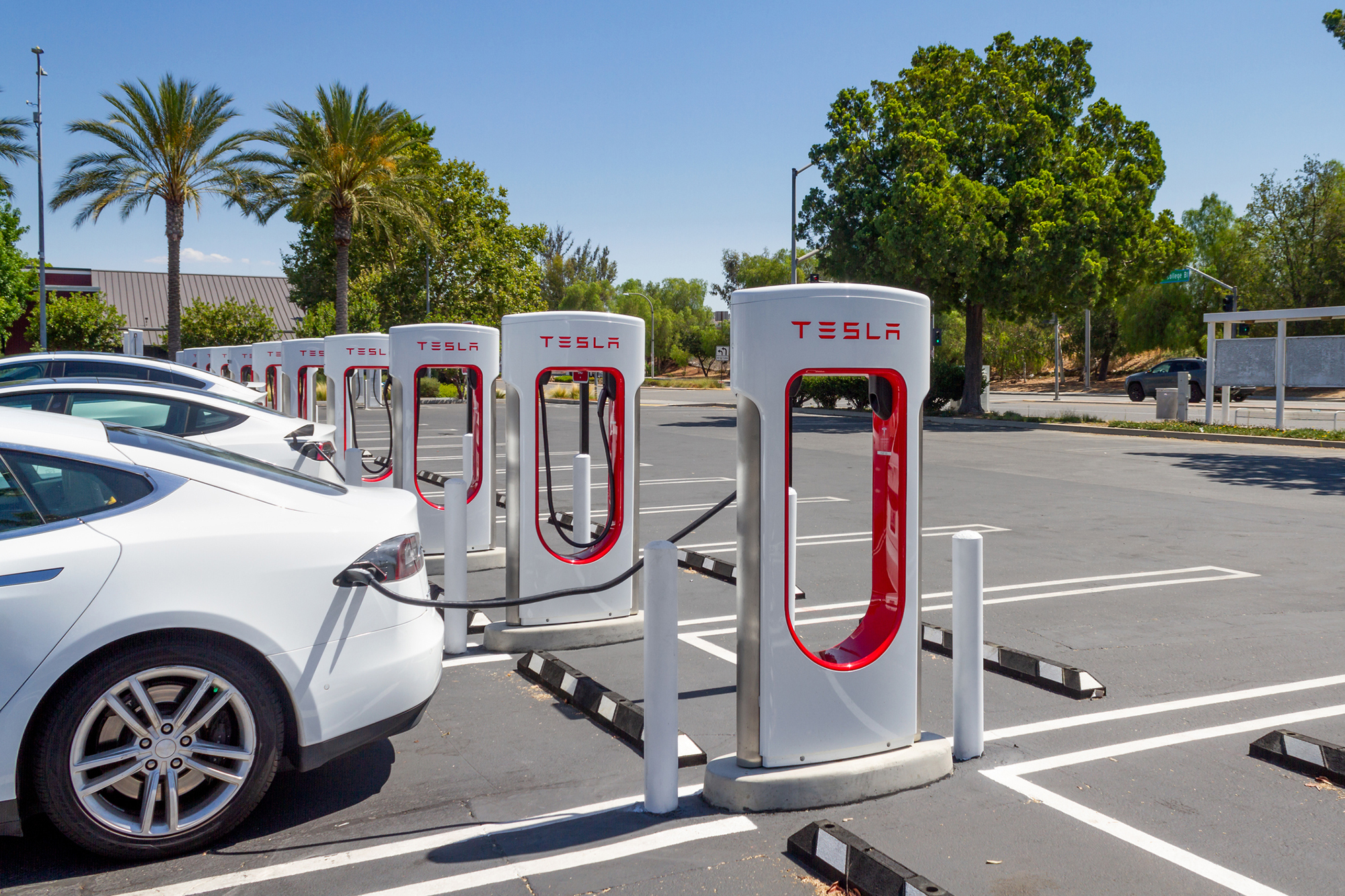Future Tech Today: How AI Powers Both Tesla Cars and Space Exploration
 Aakashi Jaiswal
Aakashi Jaiswal
How AI is Revolutionizing Space Exploration?
Remember when space exploration was all about brave astronauts and massive control rooms filled with people?
While human ingenuity is still at the heart of space missions, artificial intelligence (AI) and machine learning (ML) are becoming the unsung heroes of our cosmic adventures.
Let's break down how these smart technologies are transforming the space industry in ways that would have seemed like science fiction just a few years ago.
Making Spacecraft Smarter and More Independent
Think about driving a car on Earth - now imagine trying to drive a rover on Mars with a 20-minute communication delay!
This is where AI becomes a game-changer. Mars rovers like Perseverance can now make their own decisions about which rocks to analyze and which paths to take, thanks to AI systems that help them navigate autonomously. They can identify interesting geological features and adjust their routes without waiting for instructions from Earth.

But it's not just about Mars rovers. Modern satellites use AI to manage their operations, from adjusting their solar panels for maximum power collection to avoiding space debris without human intervention.
This level of autonomy is crucial because space is becoming increasingly crowded with satellites and debris, and split-second decisions can mean the difference between a successful mission and a costly collision.
Processing the Cosmic Data

NASA's satellites collect about 250 terabytes of data every day. That's equivalent to streaming about 62,500 HD movies!
Without AI and ML, scientists would be drowning in this ocean of information. Machine learning algorithms help by:
-Identifying potentially habitable exoplanets from countless telescope observations
-Spotting dangerous asteroids that might pose a threat to Earth
-Analyzing radio signals for signs of extraterrestrial intelligence
-Classifying different types of galaxies and cosmic phenomena
These tasks would take humans years, if not decades, to complete manually.
AI can process this information in a fraction of the time, helping scientists focus on making discoveries rather than getting lost in data.
Making Space Operations More Efficient
Space missions are incredibly expensive, and every bit of efficiency counts. AI is helping to optimize everything from rocket design to fuel consumption. For example, ML algorithms can:
-Predict equipment failures before they happen, preventing costly mission failures
-Optimize launch windows by analyzing weather patterns and atmospheric conditions
-Design more efficient spacecraft components through generative design.
-Reduce fuel consumption by calculating the most efficient flight paths
SpaceX, for instance, uses AI to help land its reusable rockets - a task that requires split-second decisions and incredibly precise calculations that would be nearly impossible for human operators alone.

Training the Next Generation of Space Explorers
AI isn't just helping in space - it's also revolutionizing how we train astronauts and space personnel. Advanced simulators powered by AI create realistic training scenarios that prepare crews for every possible situation they might encounter in space. These systems can:
-Simulate emergency scenarios that would be too dangerous to practice in reality.
-Provide personalized training programs that adapt to each trainee's learning pace.
-Create virtual reality environments that perfectly mimic space conditions.
-Help crews practice complex procedures before attempting them in space.
Looking to the Future
The role of AI in space exploration is only going to grow. As we set our sights on ambitious goals like establishing permanent bases on the Moon and sending humans to Mars, AI will be crucial for:
-Managing complex life support systems in space habitats.
-Coordinating between multiple spacecraft and ground stations.
-Operating mining operations on asteroids or other celestial bodies.
-Maintaining communication networks across vast distances.
But perhaps most exciting is how AI might help us answer some of humanity's biggest questions: Are we alone in the universe?
How did our solar system form?
What secrets lie in the countless galaxies we can observe?
Keeping Our Feet on the Ground
While AI is revolutionizing space exploration, it's important to remember that it's not about replacing human ingenuity - it's about enhancing it. The most successful space missions of the future will likely combine the analytical power of AI with human creativity, intuition, and determination.
As we continue to push the boundaries of space exploration, AI and ML will be our trusted co-pilots, helping us navigate the final frontier with greater efficiency, safety, and capability than ever before. The next time you look up at the stars, remember that artificial intelligence is up there too, helping humanity unlock the mysteries of the cosmos.
From managing spacecraft and processing vast amounts of data to training astronauts and planning future missions, AI and ML are no longer just tools of the space industry, they're essential partners in our greatest cosmic adventures. And this partnership is just beginning to take off.
How Tesla Cars Work: Your Simple Guide to These Amazing Electric Vehicles
Ever wondered how a Tesla actually works?
The Heart of the Beast: The Electric Motor
Unlike your typical car with its gas engine, a Tesla is powered by something much simpler: an electric motor. Think of it like a super-powerful version of the motor in your electric fan, but way more sophisticated.
The cool part? There are barely any moving parts compared to a regular car engine, which means less stuff that can break down.
The motor gets its juice from a massive battery pack that sits flat along the car's floor – kind of like a giant smartphone battery. This placement isn't random – it gives the car a super-low center of gravity, making it really stable around corners. Plus, this design gives you extra storage space under the hood.
The "Fuel Tank": Battery Technology

Now, these aren't your everyday AA batteries.
Tesla uses lithium-ion batteries, similar to what's in your phone but much bigger and more powerful.
They're arranged in a clever way that helps them stay cool and last longer. Depending on the model, these batteries can take you anywhere from 250 to 400 miles on a single charge – pretty impressive, right?
Charging: Easier Than You Think

Charging a Tesla is actually pretty straightforward. You've got a few options:
-Home charging: Plug it in overnight, just like your phone
-Supercharger stations: Tesla's fast-charging network that can give you about 200 miles of range in just 15 minutes
-Public charging stations: They're popping up everywhere these days
The car's navigation system helps you find charging stations and even plans routes around them for long trips.
It's like having a smart assistant making sure you never run out of juice.
The Brain: Tesla's Software

Here's where things get fascinating. A Tesla is basically a computer on wheels. The giant touchscreen in the middle isn't just for show – it controls pretty much everything in the car. But what makes Tesla special is how they handle software:
-Regular updates happen while you sleep, just like your smartphone.
-New features can appear overnight.
-The car actually learns from your driving habits.
-Safety features get better over time.
Autopilot: Your High-Tech Co-Pilot

Let's clear up a common misconception: Tesla's Autopilot doesn't make the car fully self-driving (at least not yet). Think of it more like a really smart cruise control. It can:
-Keep you in your lane
-Maintain a safe distance from other cars
-Change lanes when you signal
-Help you park
The car uses cameras, radar, and tons of sensors to see what's happening around it. It's like having an extra set of eyes watching out for you.
The Instant Zoom Factor
One of the coolest things about a Tesla is how it accelerates. Unlike regular cars that need time to build up speed, electric motors deliver instant power. Press the accelerator, and boom – you're moving. It's like being on a roller coaster, but you're in control.
Safety First
Tesla designed these cars from the ground up with safety in mind. Without a big engine in front, there's more room for crash protection. The low battery position makes them really hard to flip over. Plus, all those cameras and sensors are constantly watching for potential dangers.
The Environmental Angle
Of course, one of the biggest benefits of a Tesla is that it produces zero direct emissions. No exhaust pipe, no gas, no oil changes. While the electricity used to charge it might come from various sources (some cleaner than others), the car itself is clean and quiet.
Living with a Tesla
Day-to-day life with a Tesla is different from a regular car, but in a good way. You wake up to a fully charged car every morning. There's no need to stop at gas stations. Maintenance is minimal because there are fewer moving parts to wear out. And let's not forget the fun stuff – like the games you can play on the big screen while charging, or the silly features like "Dog Mode" that keeps your pet comfortable while you're away.
At its core, a Tesla is rethinking what a car can be. It's not just about replacing gasoline with electricity – it's about creating a smarter, safer, and more enjoyable way to get around. Whether you're a tech enthusiast or just someone who wants a reliable car that's kind to the environment, there's something fascinating about how these vehicles work.
Remember, like any technology, Teslas keep evolving. What's impressive today might be basic tomorrow. But that's part of the excitement – you're not just buying a car, you're buying into a future that keeps getting better through software updates and innovations. Pretty cool, right?
Subscribe to my newsletter
Read articles from Aakashi Jaiswal directly inside your inbox. Subscribe to the newsletter, and don't miss out.
Written by

Aakashi Jaiswal
Aakashi Jaiswal
Coder | Winter of Blockchain 2024❄️ | Web-Developer | App-Developer | UI/UX | DSA | GSSoc 2024| Freelancer | Building a Startup | Helping People learn Technology | Dancer | MERN stack developer